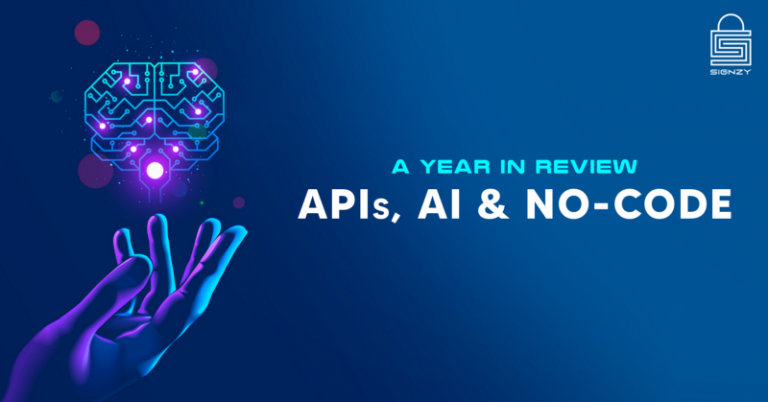This has been a crazy year by every count. Doctors now do physical checkup scans using video, US election saw 2x more mail votes than in-person votes, Staycation is now a travel category and of course, Banks are now onboarding users completely remotely without a salesperson or branch touchpoint (Purposely skipping the pandemic part, to keep spirits high !!). So year-end summaries would make for an interesting read.
And you might have got multiple such new year messages from feel-good ones to the ones with the 2020 year reviews and ones that predicted 2021. So writing this note as hard as I realized that maybe I have nothing new to add. But sometimes old incidents become very relevant today. So if I have nothing new to add, maybe I will just relive some old. And nothing better than Gates’s big gaffe about the internet.
Gates, one of the best thinkers of our generation, In 1994 commented: “ I see the little commercial potential for the internet for the next 10 years” at a conference
And of course, he was wrong — Amazon, Google, FB all sprang up in those 10 years and now dominate the top 5 largest companies in the world.
To his credit, by the end of 1995, he wrote an internal memo describing the internet as a tidal wave that will change everything.
We are at the cusp of the next tidal wave, but like in 1994, it seems too far away. And hence all of us are taking things as they come. To give a bit more context let me just recap a bit of this tech wave history :
The first wave was about indexing information fueled by the birth of the internet — Yahoo, Google, eBay
The second wave combined internet, with satellite-enabled GPS, 4G/5G tech and solved for real-time communication — WhatsApp, Zoom, Uber
The third imminent wave and probably the biggest would assist in intelligent decisions.
This would make your devices smarter :
- Your cooking dish would understand when the dish is done and self shut off
- Your car would self-drive, get maintenance at right time and come back and park itself.
- Your gym equipment would self adjust for weight based on your body goals
And this list can go on…
Consumers will start demanding more and more. If they are today demanding ‘Digital interfaces’ as Web, Mobile, and Chat apps. They will start demanding ‘Intelligent’ interfaces, which learn about user’s unique needs and assist them.
While all this can seem intimidating and a 1000 feet level gyan. I also do have some prescriptions. As business leaders, we might not be able to predict everything, but what we can do is be ready for change and build capabilities in the right areas. I am listing below the ones I think are key to nailing this new tidal wave:
AI — Systems Learning to make decisions
- According to a Gartner study, around 37 percent of all companies reviewed were found utilizing some type of ML in their business. It is anticipated that around 80 percent of modern advances will be based around AI and ML by 2022.
- According to Autonomous Next research seen by Business Insider Intelligence. the aggregate potential cost savings for banks from AI applications is estimated at $447 billion by 2023, with the front and middle office accounting for $416 billion of that total.
- Most banks (80%) are highly aware of the potential benefits presented by AI, per an OpenText survey of financial services professionals. In fact, many banks are planning to deploy solutions enabled by AI: 75% of respondents at banks with over $100 billion in assets say they’re currently implementing AI strategies, compared with 46% at banks with less than $100 billion in assets, per a UBS Evidence Lab report seen by Business Insider Intelligence.
In the banking world, AI has made significant strides. From Wells Fargo, Bank of America and Chase launching mobile apps to JP Morgan harnessing RPA, tech adoption has deeply infiltrated the banking sector. banks have realized the importance of these disruptive technologies and intensified digital transformation in their processes and solutions.
But the real question is — banks are adopting tech, but are they understanding it?
In another incident, customers have been complaining about a technical glitch on the bank’s digital banking mobile application While tech transformation comes as a boon to customers, it might also become a source of problems for both you and your customers if it’s not implemented and adopted the right way.
Here are a few things to keep in check:
- Keep an eye on the cost, hire an AI partner: Production and maintenance of artificial intelligence demand huge costs since they are complex machines. AI also consists of advanced software programs that require regular updates to meet the needs of the changing environment. You need to build your own technology team which would have the right mix of AI partners and hiring talent. This is crucial in case you are building your own team where talent matters as well as experience, instead of hiring an external AI partner.
- Tech Risks Vs Credit Risks: Technology will always remain susceptible to data privacy risks and human-made risks like hacking, credit fraud etc. So while automation may be the road forwards, banks must also consider the impact on every single/overall operation. This would require a suitable technology person/team who would be able to understand the tech risks and work accordingly.
APIs
There was a time when banks and other financial services worked in silos or based their truth on the data that was provided to them by their customers. It’s no secret that the last decade has been one of the most transformative periods for the global banking industry, at least from a regulatory perspective.
Financial institutions have been forced to evolve under this new era of transparency, with authorities taking unprecedented steps to ensure that consumer protection is maintained in the face of all of the business activity being conducted by banks.
Among the most comprehensive transparency drives is Open Banking, which requires big banks to share their customer data with third parties. And at the heart of Open Banking lie application programming interfaces (APIs).
- APIs have become especially important to banks during the last couple of years, ever since the Revised Payment Service Directive (PSD2) came into effect across Europe in January 2018. This directive has expedited the development of APIs so that third parties such as fintech (financial technology) companies and online financial-services vendors are developing apps and services that can most benefit from the data they can now procure from financial institutions.
- With consent driven data sharing architecture and more importantly with all the data being digitized over time be it identity (Aadhaar), bank records (internet banking) and even commerce (e-commerce sites and online trading); anything you would need w.r.t the customer is usually an identity verification API call away; provided the customer gives you consent.
- Your data could only be accessed when you use your debit or credit card for certain transactions through the payment processors. Hence unless you are officially validated, you can’t access an individual’s banking history. However, your banking data still found a way to get to other companies who could use it for their business promotion. The usage data of the customers can be used to automatically target customers with offers that they can be availed by using their bank card.
- In India, with the introduction of IndiaStack, newly reformed data privacy laws and DEPA architecture, it’s no surprise that the old rules are going for a toss. Its time for newer API driven data sharing techniques. Improvement of the entire service operations can be done through collaborative/partner-driven approaches like neo-banks or fintech/bank collaborations that have grown over the past decade.
What we are seeing is that banks are looking to combine Open Banking with real-time or instant payments and indeed, that is how a truly seamless customer experience can be created. The commercialization aspect of Open Banking is not only going to be about building APIs and exposing customer accounts to TPPs, it is also about combining these with propositions such as real-time or instant payments and then building a seamless user journey that a customer or a TPP would be willing to pay for.
Cloud and No Code
Gartner predicts that no code application building would constitute more than 65% of all app development functions by the year 2024, with about 66% of big companies using a minimum of four low code tools and platforms.
- The potential benefits of utilizing an NCDP tool is that with web access and practical business intelligence one can become an application developer, which is transformational for enterprise productivity.
- On the other hand, IT folks have pointed out that business users inept at debugging code may create further challenges for tech teams, given the sensitivity around cybersecurity and business theft events caused by software bugs.
- Nevertheless, NCDPs users can create and experiment directly at scale and speed. They are the next wave in programming and techniques for rapid app development.
The evolution of cloud computing, combined with the power, flexibility and scalability of no-code platforms would mean that most if not all systems within the banking organization would be built using no-code, allowing even non-tech executives to build and modify systems in response to customer or market requirements.
This also means that now banks would have to put their focus on no-code and cloud technology and start building their teams around it. Especially focus on building internal cloud capabilities that can help them manage and scale their internal systems in response to changing demographics of the technology they might have to use.
- If proper precautions are not taken by the vendors then entire confidential data will get corrupted. This could be avoided by encrypting the cloud service and the storage of confidential information in private storage can help in managing the risk.
- Cloud computing reduces all the capital expense of buying and setting up hardware and software at data centers. This makes the banks focus more on banking functions. When purchasing the cloud, be aware of which functions are absolutely crucial to save costs.
To end on a star-gazing note, What would be the next wave?
My bet would be on genetics to make us super-humans, a close second would be the digital afterlife. Would love to hear your craziest predictions and also ideas on how this current wave would play out.
Also, a bit about Signzy’s 2020 to sign it off:
- We won 7 awards including 3 international ones
- Our customers grew from 87 to 160
- Signzy team grew to 162 from 79
- We are now present in 5 locations — Pune, Mumbai, Bangalore, Dubai and New York
- And with additional funding, this year are well-capitalized with $10.5 M in the bank
About Signzy
Signzy is a market-leading platform redefining the speed, accuracy, and experience of how financial institutions are onboarding customers and businesses – using the digital medium. The company’s award-winning no-code GO platform delivers seamless, end-to-end, and multi-channel onboarding journeys while offering customizable workflows. In addition, it gives these players access to an aggregated marketplace of 240+ bespoke APIs that can be easily added to any workflow with simple widgets.
Signzy is enabling ten million+ end customer and business onboarding every month at a success rate of 99% while reducing the speed to market from 6 months to 3-4 weeks. It works with over 240+ FIs globally, including the 4 largest banks in India, a Top 3 acquiring Bank in the US, and has a robust global partnership with Mastercard and Microsoft. The company’s product team is based out of Bengaluru and has a strong presence in Mumbai, New York, and Dubai.
Visit www.signzy.com for more information about us.
You can reach out to our team at reachout@signzy.com
Reach us at www.signzy.com
Written By:

Ankit Ratan,
Co-Founder, Signzy














